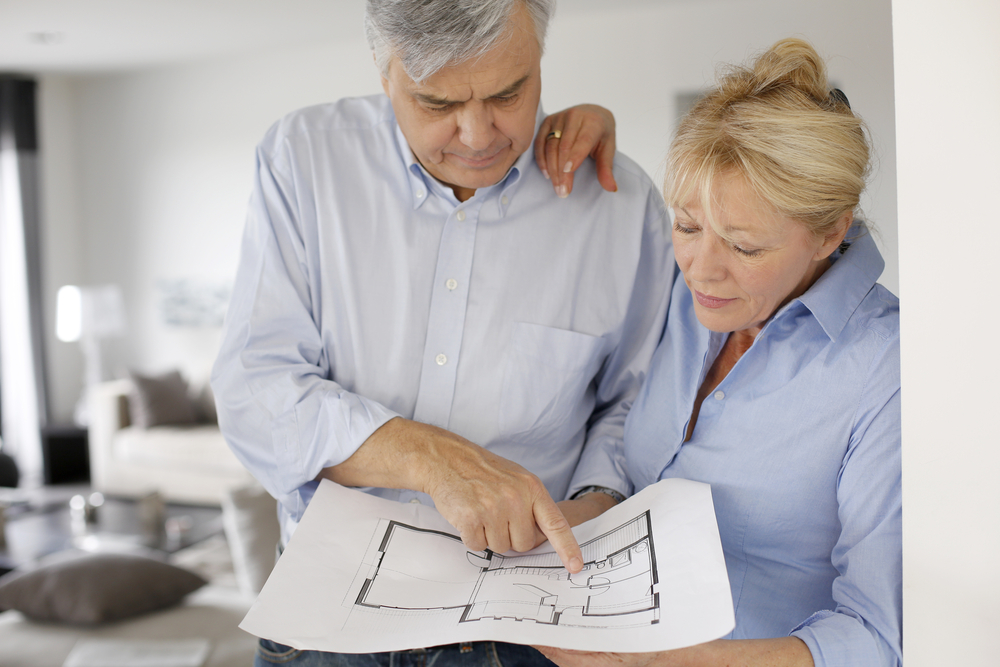Aging in Place: Safety Tips for Seniors at Home

For many seniors, home is where the heart is — and home is where you want to stay. If you’re set on aging in place, it’s never too soon or too late to address home safety and how you can adapt your home to fit your needs, which may change with time.
Creating an age-friendly home may require some special planning, research, and investment. Whether you make minor aging-in-place home modifications or do a full redesign of your home, adjustments that focus on home safety for seniors can help you continue to enjoy familiar surroundings in comfort.
Home Safety Tips for Seniors That Require Minimal Work and Money
Making your home safer doesn’t necessarily require a major overhaul. In fact, you may be surprised by how minor changes can go a long way toward creating an age-friendly home. Some of them won’t cost anything at all!
Go room to room and evaluate how you can rearrange the furniture to create wider walking paths and remove safety hazards such as rugs and other items that pose a tripping or fall risk.
Another step toward protecting your safety is reducing clutter, which may mean selling, donating, or throwing away items, and finding new storage spots for others. Well-lit rooms contribute to better safety and protect your eye health — and this can be accomplished simply by replacing dim bulbs and adding more light fixtures. Pay special attention to rooms where home safety risks are greatest, such as the bathroom and kitchen. Grab bars near the toilet and entrance to the shower will help you maneuver comfortably, and assistive devices like shower stools or grabbers will help you live life safely and efficiently. In the kitchen, put items you use frequently in easy reach by rearranging your cabinets and adding slide-out shelving.
Home Safety Updates That Take a Little More
The reality is that some modifications for aging in place safely and gracefully may cost a bit more but will be well worth the added effort if you’re set on living at home. Especially when you start investing larger amounts of money, you’ll want to prioritize the highest-risk areas. In the bathroom, for example, a taller toilet can offer both safety and comfort. Nonslip texturing can help prevent falls on slippery floors. You might also consider installing a walk-in style tub or a curbless shower for easier access. Replacing doorknobs throughout the house with lever knobs makes it much easier to grip and open doors. You may not have given light switches or electrical outlets much thought, but relocating them to more accessible heights and replacing traditional switches with rocker panels, knobs, or panels can be gentler on hands and fingers. Other moderately priced updates include smart technology to help you control home features like lights, locks, and the thermostat from a touch-screen device.
Safe passage into and out of your home is one of the more expensive changes you can make, but it’s also one of the most essential, so a ramp that bypasses steps may be a solution worth considering.
Big Projects With Sizable Price Tags
For a variety of reasons, your home may not be ideally suited to aging in place, but that doesn’t mean you can’t make major renovations if you have the budget available. If you rely on assistive equipment like a cane, walker, or wheelchair now or anticipate that you will in the future, these renovations include things like widening doorways or hallways so that you can make your way safely throughout the home. Adding or converting a room into a main floor master bedroom and moving laundry facilities to the main floor are two of the most common — but also expensive — projects that make aging in place easier and more practical for many seniors.
Look Into Additional Home Safety Resources
While the setup of your physical living space is essential to your ability to age in place, other resources are available to ensure that you can live as independently as possible while still enjoying and making the most of every day. Contact us to learn more about how the Springpoint Choice membership program can help you with your needs as you age in place while giving you access to additional support if your health changes down the road.
Springpoint Choice Offers Peace of Mind
Springpoint Choice’s membership program makes senior care planning easy, affordable, and secure. Offered by Springpoint, the Mid-Atlantic’s leading provider of senior care and housing services, Springpoint Choice is an alternative to long-term care insurance or a complement to an existing policy. Springpoint Choice allows members to safeguard their finances by planning for the care they may need in the future. That means peace of mind for you — and for your loved ones. Contact us to learn more about Springpoint Choice or any of our senior living communities.
